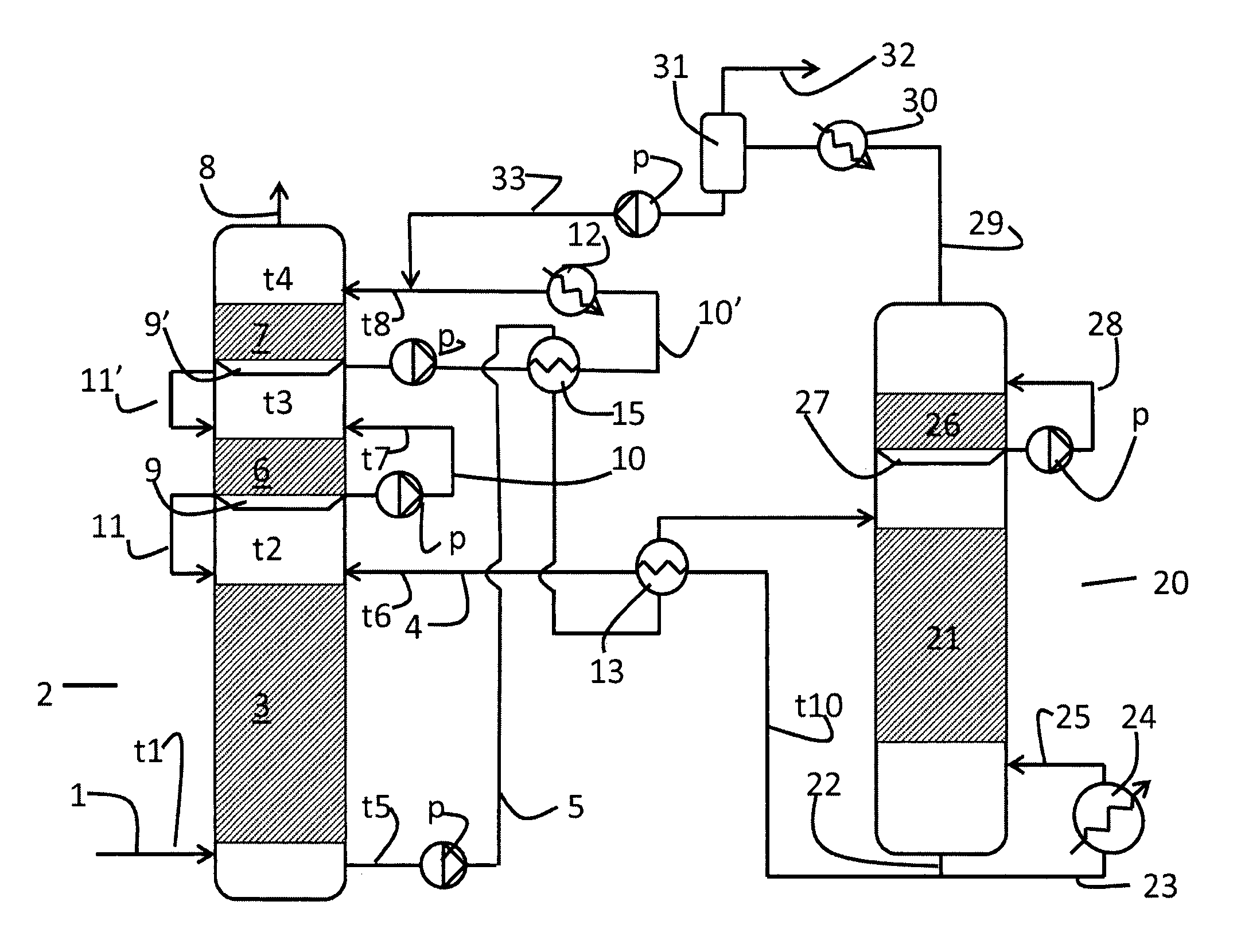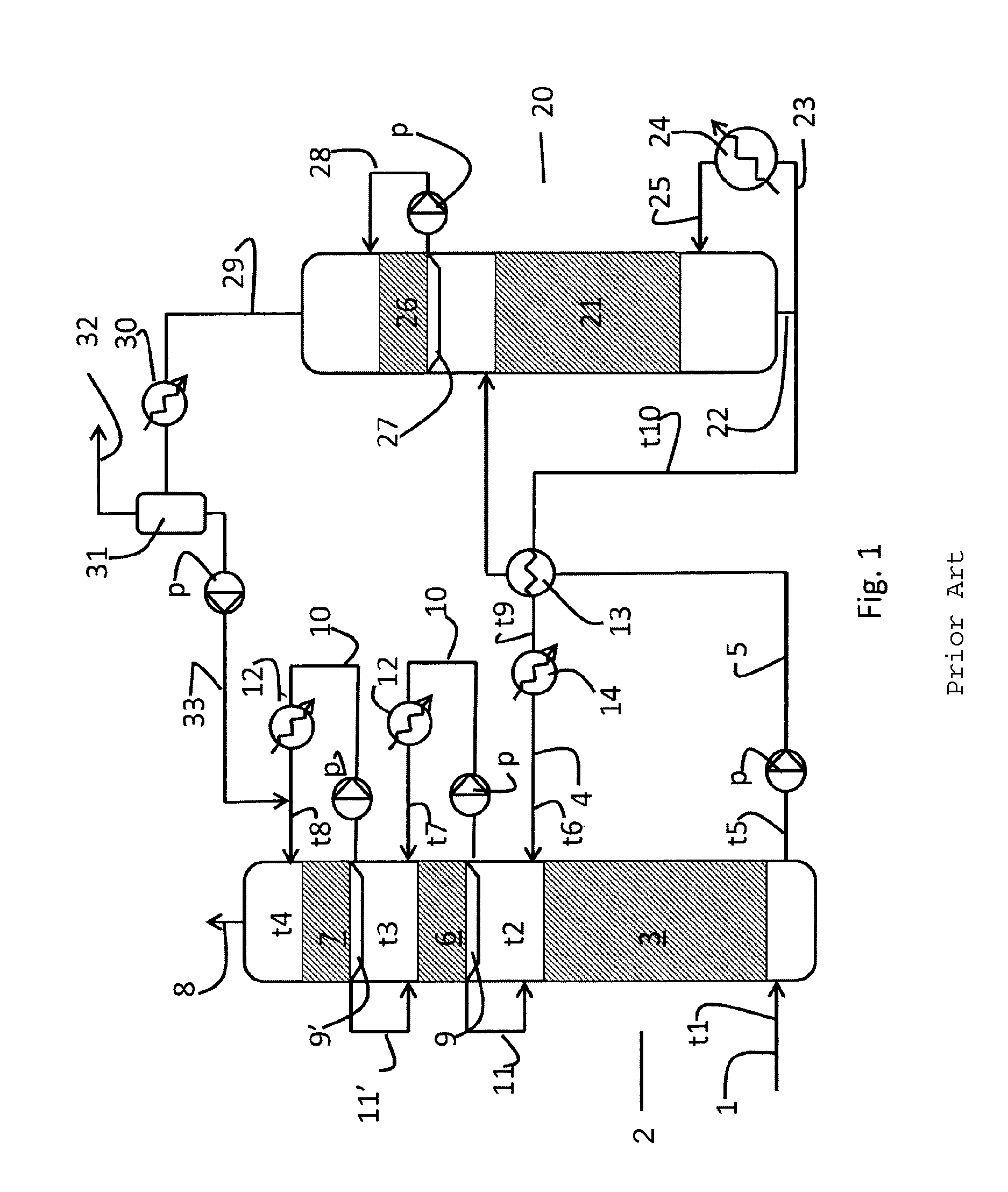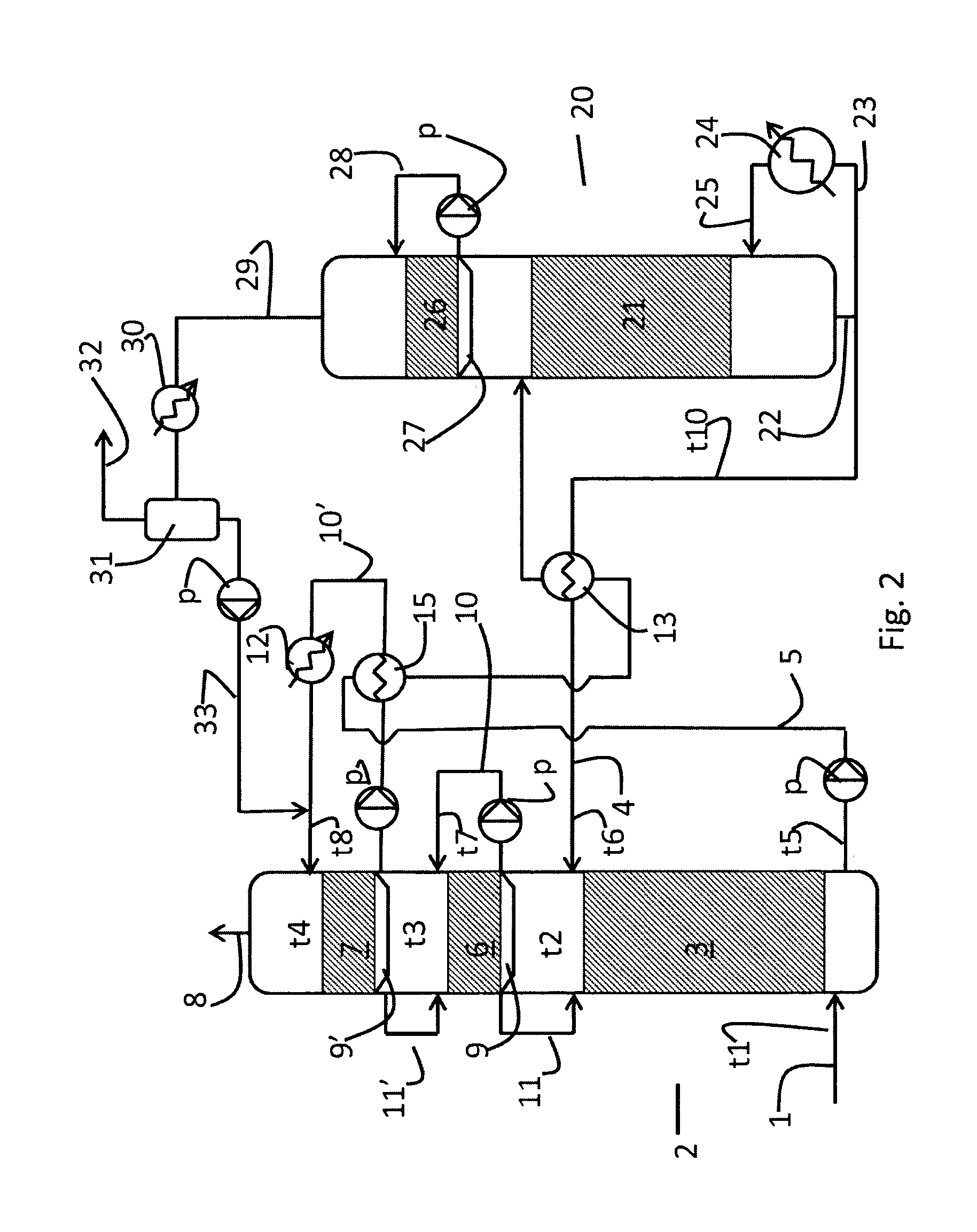Method for mist control
a technology of mist control and demister, which is applied in the direction of separation process, dispersed particle separation, chemistry apparatus and processes, etc., can solve the problems of difficult removal of demisters in wet scrubbers and conventional demisters, high co and soot formation, and less attractive demisters for large gas volume applications, etc., to achieve efficient removal or substantially reduce the
- Summary
- Abstract
- Description
- Claims
- Application Information
AI Technical Summary
Benefits of technology
Problems solved by technology
Method used
Image
Examples
Embodiment Construction
[0029]FIG. 1 illustrates a carbon capture plant according to the prior art. CO2 containing gas, such as exhaust gas from a power plant fired with carbonaceous fuel is introduced through an exhaust gas inlet 1 into an absorber 2. In the absorber 2, the exhaust gas is caused to flow countercurrent to an aqueous absorbent in a CO2 absorption section 3. The aqueous absorbent, being an aqueous solution of one or more amine(s), is introduced at the top of the CO2 absorption section 3 through a lean absorbent line 4.
[0030]Rich absorbent, having absorbed CO2, is collected at the bottom of the absorber and withdrawn through a rich absorbent line 5. The CO2 depleted flue gas leaving the CO2 absorption section 3, is then washed in one or more washing zone(s) 6, 7 to cool the flue gas, and to remove or reduce the amount of amines and degradation products from the absorbents that are carried with the flue gas. The cooled and washed exhaust gas is thereafter withdrawn from the absorber through a ...
PUM
| Property | Measurement | Unit |
|---|---|---|
| temperature | aaaaa | aaaaa |
| temperature | aaaaa | aaaaa |
| temperature | aaaaa | aaaaa |
Abstract
Description
Claims
Application Information
 Login to View More
Login to View More - R&D
- Intellectual Property
- Life Sciences
- Materials
- Tech Scout
- Unparalleled Data Quality
- Higher Quality Content
- 60% Fewer Hallucinations
Browse by: Latest US Patents, China's latest patents, Technical Efficacy Thesaurus, Application Domain, Technology Topic, Popular Technical Reports.
© 2025 PatSnap. All rights reserved.Legal|Privacy policy|Modern Slavery Act Transparency Statement|Sitemap|About US| Contact US: help@patsnap.com



